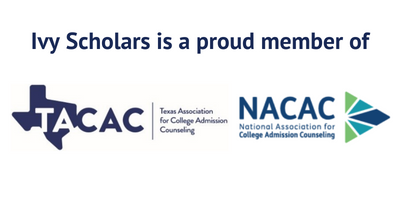A lot of international students apply to American universities; this is unsurprising. American universities are often considered to be among the best in the world, and degrees from them are recognized in countries globally, unlocking greatly expanded career horizons.
For this reason, tens of thousands of students from around the globe apply to American colleges each year. That said, while US institutions do greatly enjoy having international students on campus, they don’t want to only serve international students. In some cases there are actual caps on how many may be admitted, while other times it’s a rough guideline. In this article, we’re going to look at the acceptance rate of international students at top colleges, and how many students at that college are international students. This will give you a rough sense of how many international students they accept each year, and how many a specific school is looking for. Let’s get started!
The Data
Not all schools release acceptance rates broken down this granularly, indeed, a significant number do not. We have included this data where it is available. Schools are far more open with their demographic data, but this doesn’t necessarily imply anything about acceptance rates. We’ll analyze this data more below.
| College | International Student Acceptance Rate | % International Students |
| Boston College | Not Released | 10.5% |
| Boston University | Not Released | 21.2% |
| Brandeis | 15% | 20.2% |
| Brown | 4% | 11.9% |
| Caltech | Not Released | 7.5% |
| Carnegie Mellon | Not Released | 16.1% |
| Case Western | 20% | 13.8% |
| Columbia | 3% | 18.1% |
| Cornell | 3% | 9.7% |
| Dartmouth | Not Released | 10.7% |
| Duke | Not Released | 8% |
| Emory | 7% | 15.3% |
| Georgetown | 8% | 14.6% |
| Georgia Tech | 10% | 9.2% |
| Harvard | 2% | 12.3% |
| Johns Hopkins | 5% | 11.6% |
| MIT | Not Released | 10.3% |
| New York University | Not Released | 23.7% |
| Northeastern | 4% | 16% |
| Northwestern | Not Released | 9.7% |
| Notre Dame | 9% | 15.2% |
| Princeton | 2% | 11.7% |
| Purdue | 30% | 11.2% |
| Rice | Not Released | 12.2% |
| Rutgers | 71% | 9.8% |
| Stanford | Not Released | 10.7% |
| Texas A&M | 64% | 1.2% |
| Tufts | 5% | 10.7% |
| Tulane | 14% | 5.2% |
| UC Berkeley | 6% | 12.6% |
| UC Davis | 49% | 16.4% |
| UC Irvine | 33% | 16.3% |
| UCLA | Not Released | 10.3% |
| UC San Diego | 18% | 16.9% |
| UC Santa Barbara | 21% | 12.9% |
| University of Chicago | Not Released | 15% |
| University of Florida | 20% | 2.4% |
| UIUC | 35% | 13.2% |
| University of Michigan | Not Released | 21.3% |
| UNC Chapel Hill | 18% | 9.5% |
| UPenn | 3% | 11.9% |
| University of Rochester | 12% | 26.4% |
| USC | Not Released | 11.9% |
| UT Austin | 13% | 4% |
| University of Washington | 45% | 14.7% |
| Vanderbilt | 4% | 9.4% |
| Wake Forest | Not Released | 9.2% |
| WashU | 6% | 7.2% |
| William and mary | Not Released | 4.8% |
| Yale | Not Released | 10% |
Note that this data reflects undergraduate enrollment only; a significant number of graduate students come from outside the US, and often make up a significant percentage of the graduate students on campus. We’ll examine why this is later, but for now, note that if you look up international students in a school, you may find results for undergraduates, or for a combination of undergraduate and graduate students. These may therefore differ from this table. These numbers are accurate as of 2024.
What Does This Data Mean?
There are several takeaways from this data. First, and most notably, is that international students are not a majority on any of these campuses. Indeed, they only rarely surpass 20% of a school’s total undergraduate population, and the number is often far lower. This is perhaps unsurprising; American colleges primarily serve American students. Even if this is not obligated in their charter, it still tends to be the way things work out.
Some schools do specifically limit their international student population, but this is a secondary effect. UT Austin, for example, sets aside 90% of the seats in each incoming class for Texas residents by law. The school is a public university in Texas, dependent on funds from the state government, and so that government mandates that they must primarily serve Texas residents. This impacts both international students, and those from other states in the US.
For the most part, however, universities do not have explicit policies limiting the number of international students. Nor do they have strict quotas of how many they can or should admit. Instead, they tend to go by feel, and based on their priorities for a given class.
Most universities limit the number of international students in a few ways, even if not explicitly. There may not be official caps by country or region, but there are limits. Just as a university wouldn’t want to only admit students from Florida or New York, they also wouldn’t only want to admit international students from Europe or East Asia.
Also of note is that not all colleges are equally popular with international students. UPenn has a fairly robust 11.9% of their student body comprised of international admits, but only lets in 3% of those that apply. University of Florida, by contrast, admits around 20% of international students who apply, but only has 2.4% of its total student population composed of international students.
Sure, Penn is generally much more well known than the University of Florida, but this data also suggests that when international students come to the US, they tend to focus their efforts on a few select schools. While there are many possible reasons for this, we think there are two main ones: name recognition and return on investment.
Name recognition is easy; many more people in the US have heard of Harvard than schools like Emory or the University of Rochester. These are both quite good schools, but they simply don’t have the cultural impact or brand recognition that the Ivy League enjoys, and therefore fewer international students bother applying. After all, prestige is one of the main reasons to come to the US for an education, and what’s the use of prestige if nobody has heard of the school you are attending.
Another factor is cost. There is very limited financial aid for international students at many schools; a large number don’t offer it at all. Only a small number of institutions offer any aid, and most of these factor need into the admissions process. We have another article explaining international financial aid further, but in general, this data shows a correlation between colleges which offer aid and their popularity with international students.
A Note on Graduate Students
This data does not cover graduate students, but we wanted to discuss them briefly. A significant number of Masters and Doctoral students in the US come to study here from abroad. This comprises both students who earned their bachelor’s in the US, and those who did abroad.
This is in large part due to a significant funding increase for international graduate students when compared to international undergrads. You do not see the same increase for law or medical programs, which often limit the number of international students admitted.
What Does This Mean for You?
So then what does all of this data mean for you and your admissions chances? The first and most obvious takeaway is that admissions is quite competitive for everyone, but it does tend to be slightly more competitive for international students at top colleges specifically.
This makes sense; if a college is limiting the number of international students they accept, and they are very popular with international students, then acceptance rates will be lower. While this data is not broken down by country, we have heard from admissions officers that this can impact admissions rates as well. Some countries have far more applicants than others, and this makes them more competitive. While universities don’t directly compare students, and don’t have quotas for each country, they value a variety of experiences, and a student from a less common country may be seen to provide that.
Thus for students from countries which send a lot of students to the US, such as China or the UK, admissions rates can be even lower than those listed on the table. This does not make admissions impossible of course, but does mean you will need to do more in order to stand out in the admissions process.
Finally, when drafting your college list, you should consider what you are looking for in a school, and consider options outside of the Ivy League. There are a number of excellent schools which have a reasonable acceptance rate for international students; while it is perhaps not easy to get admitted, the odds are better than you would find at some other schools.
Final Thoughts
Applying to top colleges is always a challenge, regardless of who or where you are. There are simply too many bright and talented students, each of whom is well qualified; some will always be left out. This is compounded for international students, who often face even higher levels of competition for an even more limited number of slots. We hope that this article has helped you better understand your own admissions chances, and how universities make decisions about how to handle international applications.
If you are looking for help with your own college applications, or advice on how to make sure you stand out in the admissions process, then Ivy Scholars can help. We work with students from around the globe, and have helped them find their place at any number of top universities in the US. If you want to learn more about how we can help you with your own collegiate ambitions, schedule a free consultation with us today. We’re always happy to hear from you.








